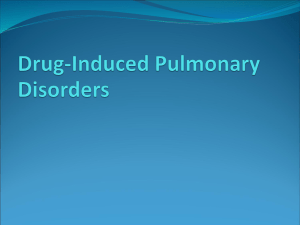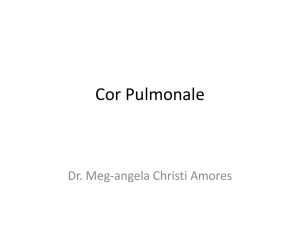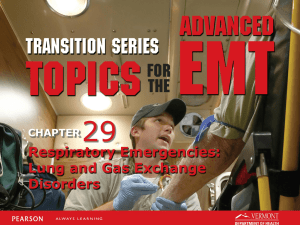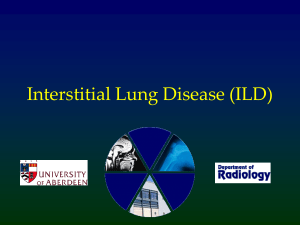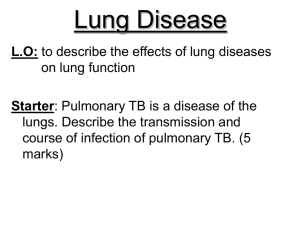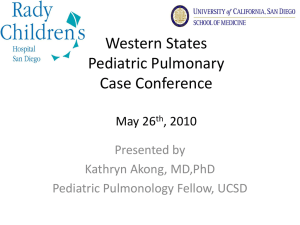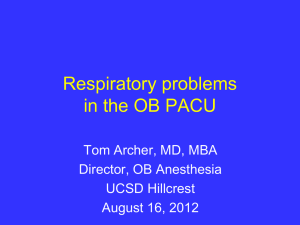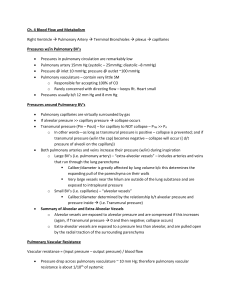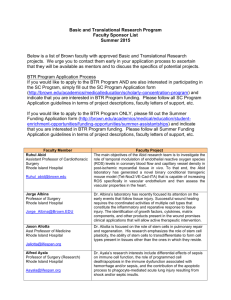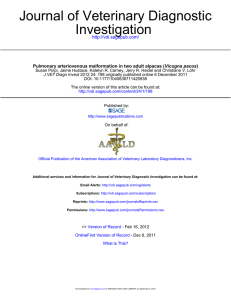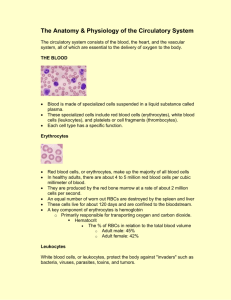Objectives 41 - U
advertisement
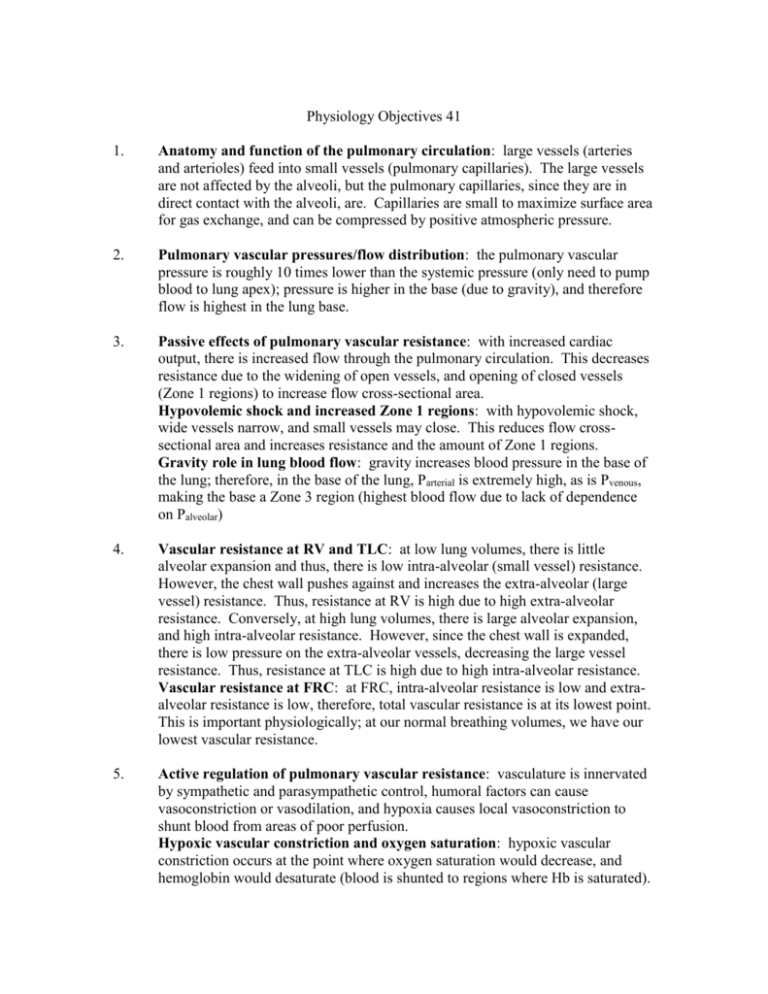
Physiology Objectives 41 1. Anatomy and function of the pulmonary circulation: large vessels (arteries and arterioles) feed into small vessels (pulmonary capillaries). The large vessels are not affected by the alveoli, but the pulmonary capillaries, since they are in direct contact with the alveoli, are. Capillaries are small to maximize surface area for gas exchange, and can be compressed by positive atmospheric pressure. 2. Pulmonary vascular pressures/flow distribution: the pulmonary vascular pressure is roughly 10 times lower than the systemic pressure (only need to pump blood to lung apex); pressure is higher in the base (due to gravity), and therefore flow is highest in the lung base. 3. Passive effects of pulmonary vascular resistance: with increased cardiac output, there is increased flow through the pulmonary circulation. This decreases resistance due to the widening of open vessels, and opening of closed vessels (Zone 1 regions) to increase flow cross-sectional area. Hypovolemic shock and increased Zone 1 regions: with hypovolemic shock, wide vessels narrow, and small vessels may close. This reduces flow crosssectional area and increases resistance and the amount of Zone 1 regions. Gravity role in lung blood flow: gravity increases blood pressure in the base of the lung; therefore, in the base of the lung, Parterial is extremely high, as is Pvenous, making the base a Zone 3 region (highest blood flow due to lack of dependence on Palveolar) 4. Vascular resistance at RV and TLC: at low lung volumes, there is little alveolar expansion and thus, there is low intra-alveolar (small vessel) resistance. However, the chest wall pushes against and increases the extra-alveolar (large vessel) resistance. Thus, resistance at RV is high due to high extra-alveolar resistance. Conversely, at high lung volumes, there is large alveolar expansion, and high intra-alveolar resistance. However, since the chest wall is expanded, there is low pressure on the extra-alveolar vessels, decreasing the large vessel resistance. Thus, resistance at TLC is high due to high intra-alveolar resistance. Vascular resistance at FRC: at FRC, intra-alveolar resistance is low and extraalveolar resistance is low, therefore, total vascular resistance is at its lowest point. This is important physiologically; at our normal breathing volumes, we have our lowest vascular resistance. 5. Active regulation of pulmonary vascular resistance: vasculature is innervated by sympathetic and parasympathetic control, humoral factors can cause vasoconstriction or vasodilation, and hypoxia causes local vasoconstriction to shunt blood from areas of poor perfusion. Hypoxic vascular constriction and oxygen saturation: hypoxic vascular constriction occurs at the point where oxygen saturation would decrease, and hemoglobin would desaturate (blood is shunted to regions where Hb is saturated). 6. Extravascular fluid movement in the lung: use of the Starling equation; extravascular hydrostatic pressure moves fluid into the vasculature and extravascular oncotic pressure moves fluid into the extravascular space. Increased pulmonary capillary pressure and pulmonary edema: pulmonary capillary pressure increases capillary hydrostatic pressure and therefore increases fluid flow into the extravascular space, causing edema. Hydrostatic (cardiogenic) edema: caused by increased pulmonary capillary pressure (mitral valve stenosis, left atrial tumor, left ventricular failure, fluid overload) Non-hydrostatic (non-cardiogenic) edema: caused by increased pulmonary capillary permeability (chemical, thermal, humoral, and immune injuries including chemical inhalation, smoke inhalation, drowning, prolonged shock, endotoxin exposure, and prolonged shock)

